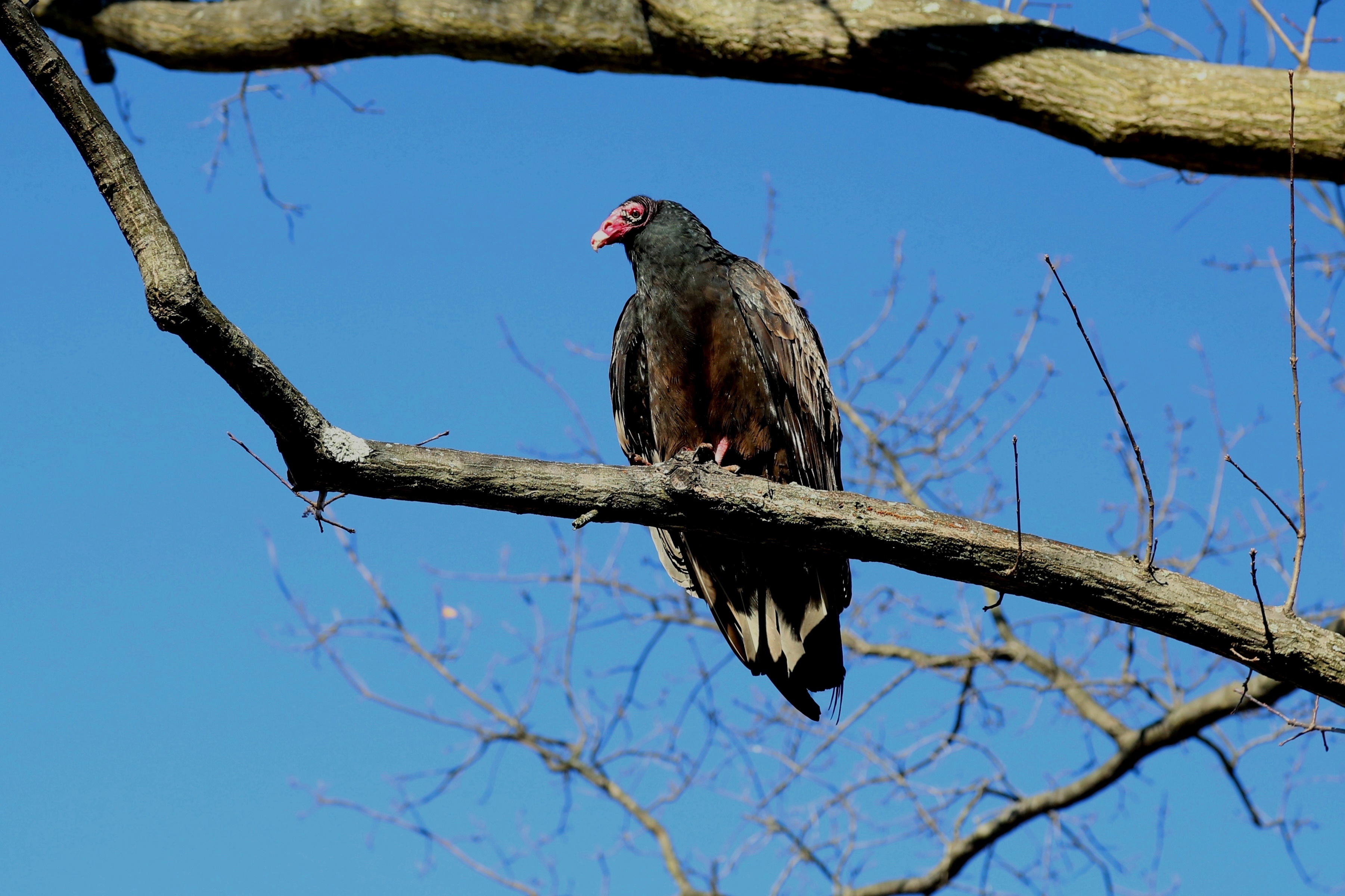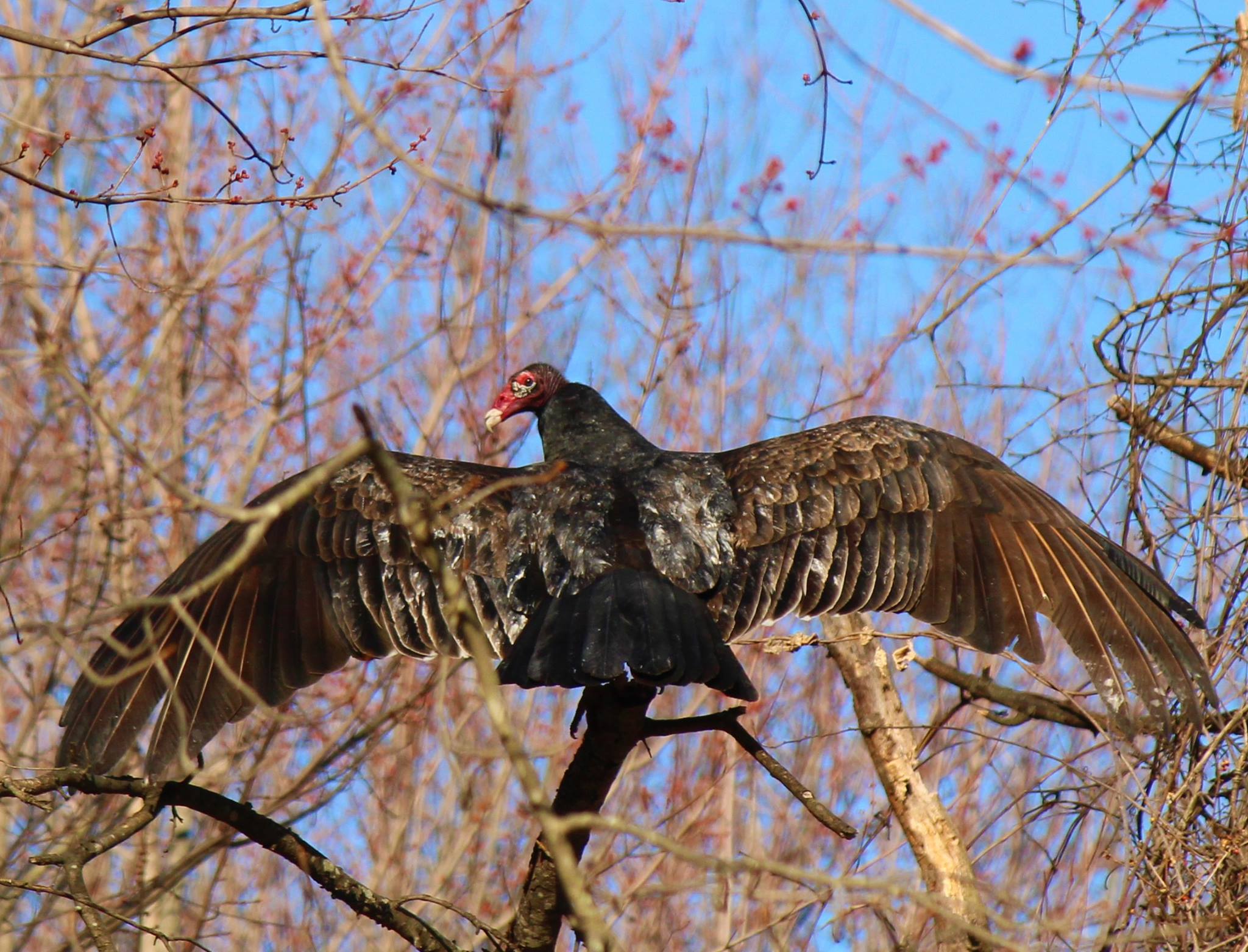Turkey Vulture
Cathartes aura
Description & Range:

Turkey vultures are large, dark birds with an average wingspan of 65 to 70 inches. Adults are covered in black and/or dark brown feathers with a featherless red head and pale bill, while juveniles less than 12 months old have black heads. The undersides of the trailing edges of their flight feathers are paler, leading to a two-toned appearance. When flying, they form a “V” shape with their wings by holding the tips of the wings higher than the rest of their body. They have long feathers that look like “fingers” at their wingtips and long tails that extend past their toes when in flight.
In the southern United States, turkey vultures can be found year-round. In the northern U.S., they are present only during the breeding season. In Maryland, parts of the population are migratory and others are not, and migrants from northern populations will winter in Maryland. Thus, turkey vultures occur in Maryland year-round.
Habitat:
Turkey vultures are common around open areas such as farm fields, roadside, and suburbs. They are also attracted to areas with food sources, such as landfills, construction sites, and trash heaps.
Diet:

Turkey vultures are scavengers that eat carrion, or the decaying flesh of dead animals. They use their strong sense of smell to find carcasses, even from thousands of feet away. In fact, turkey vultures have one of the largest brain sections for detecting smell of any bird. They eat mostly mammals, but may also eat reptiles, other birds, amphibians, fish, insects, and vegetable matter.
Reproduction:
Turkey vultures nest on rocky surfaces and ledges, and in tree cavities, hollow logs, thickets, mammal burrows, and occasionally in old dilapidated buildings or structures. They do not build nests, and instead scrape out a spot in soil or leaf litter or rearrange vegetation or rotting wood to contain their eggs. These nest sites are typically isolated from human presence or disturbance. Turkey vultures will lay one to three eggs, which both parents will incubate for up to 41 days. When courting, mating pairs will perform a “follow flight” display where one bird leads the other through a series of twists and turns through the air.
Sounds:
Turkey vultures do not have a voice box. The only noises they make are hisses and grunts.
Behavior:
Turkey vultures fly low to the ground in order to pick up the scent of dead animals, and are able to smell carrion from over a mile away. They fly with their wings open in a “V” shape, often wobbling from side to side. They rely on thermal air currents that help them soar above the ground, traveling up to 200 miles per day. When not flying or scavenging, particularly at night and in colder weather, they often roost on poles, dead trees, and fence posts.
Sources:
https://dnr.maryland.gov/parkquest/Documents/PQ_DansMt.pdf
https://www.allaboutbirds.org/guide/Turkey_Vulture/overview
https://www.chesapeakebay.net/discover/field-guide/entry/turkey-vulture
https://www.audubon.org/field-guide/bird/turkey-vulture
https://birdsoftheworld.org/bow/species/turvul/cur/introduction